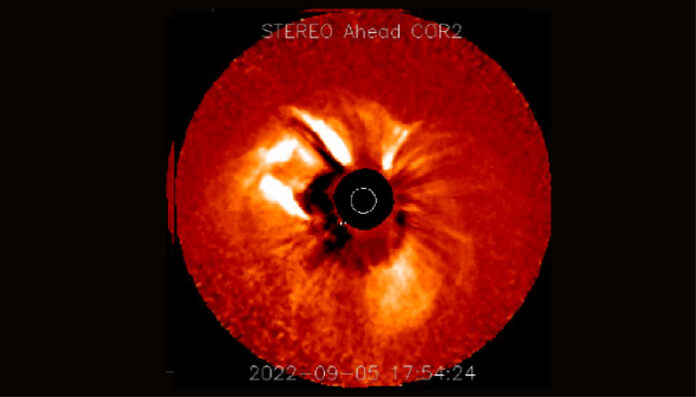An enormous explosion erupted from behind the sun on Monday, and scientists think its source could be rotating toward the Earth in the coming days.
On September 5, NASA’s STEREO-A spacecraft recorded a significant coronal mass ejection (CME)—an eruption of plasma and magnetic activity from the sun’s atmosphere—that occurred on the far side of the sun.
Since the CME did not occur in the direction of Earth, scientists spotted it by its “halo,” a giant shockwave that could be seen from Earth’s position on the other side of the sun.
Solar activity is increasing as part of the sun’s roughly 11-year natural cycle, and activity is expected to peak in the summer of 2025. However, scientists have noticed that the activity in the current stage of the sun’s cycle is much higher than predicted.
“When the Sun changes, it also changes the environment around it,” Nour Raouafi, Parker Solar Probe project scientist at the APL, said in a NASA press release on August 31. “The activity at this time is way higher than we expected.”
It’s thought the September 5 CME headed in the direction of Venus, with the nearby Solar Orbiter satellite detecting a wave of energetic particles passing by.
CMEs are good to keep track of since they can cause disruption here on Earth. When these solar eruptions interfere with Earth’s magnetic field, radio communication can be interrupted and power grids can be affected. They can also spark auroras, the colorful lights in the night sky.
Most CMEs are not strong enough to cause any disruption that the public will notice, but particularly strong CMEs are possible.
While the September 5 CME is not expected to cause any problems on Earth, it’s possible that its suspected source—a huge sunspot known as AR3088, might.
Most CMEs are not strong enough to cause any disruption that the public will notice, but particularly strong CMEs are possible.
While the September 5 CME is not expected to cause any problems on Earth, it’s possible that its suspected source—a huge sunspot known as AR3088, might.


















































